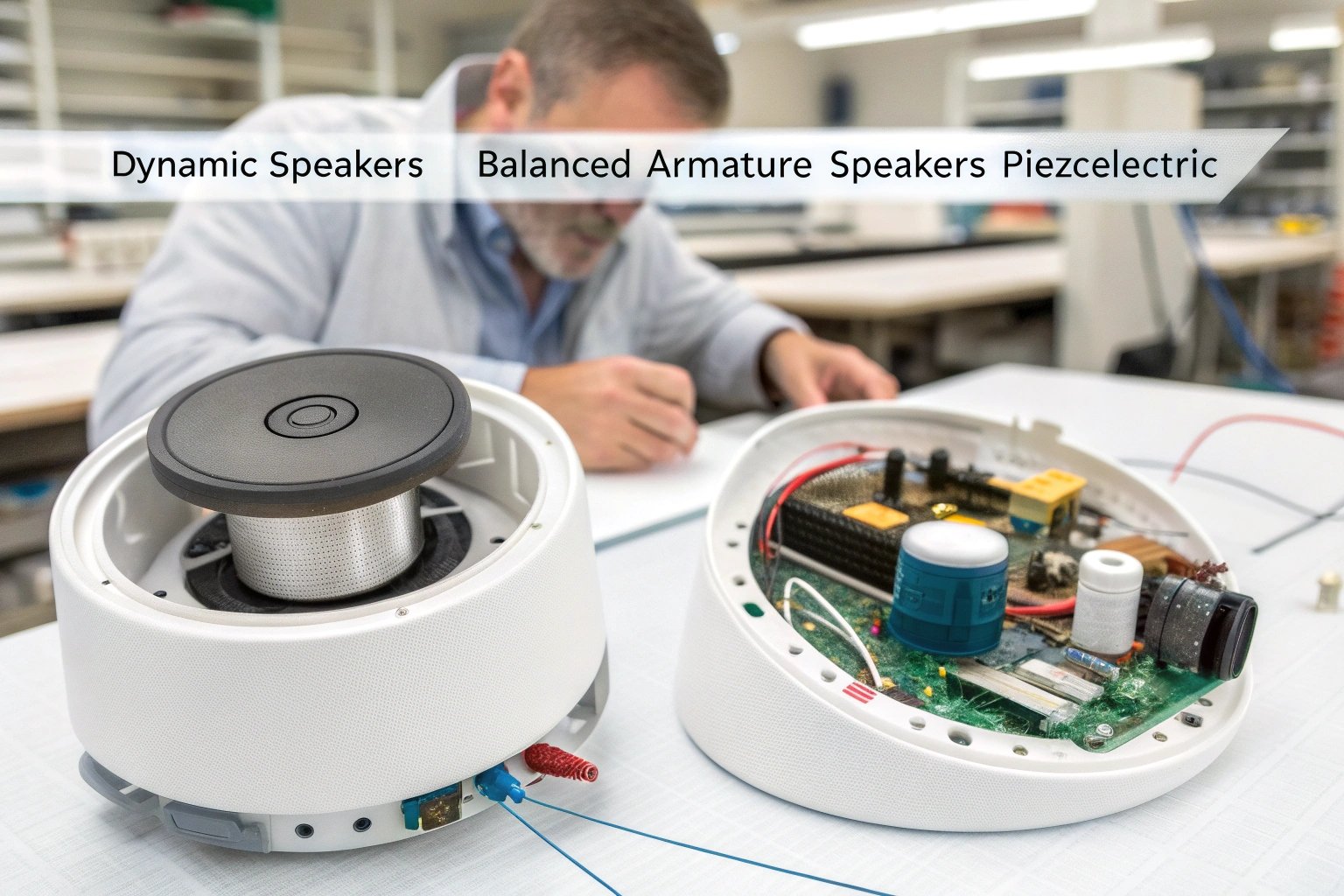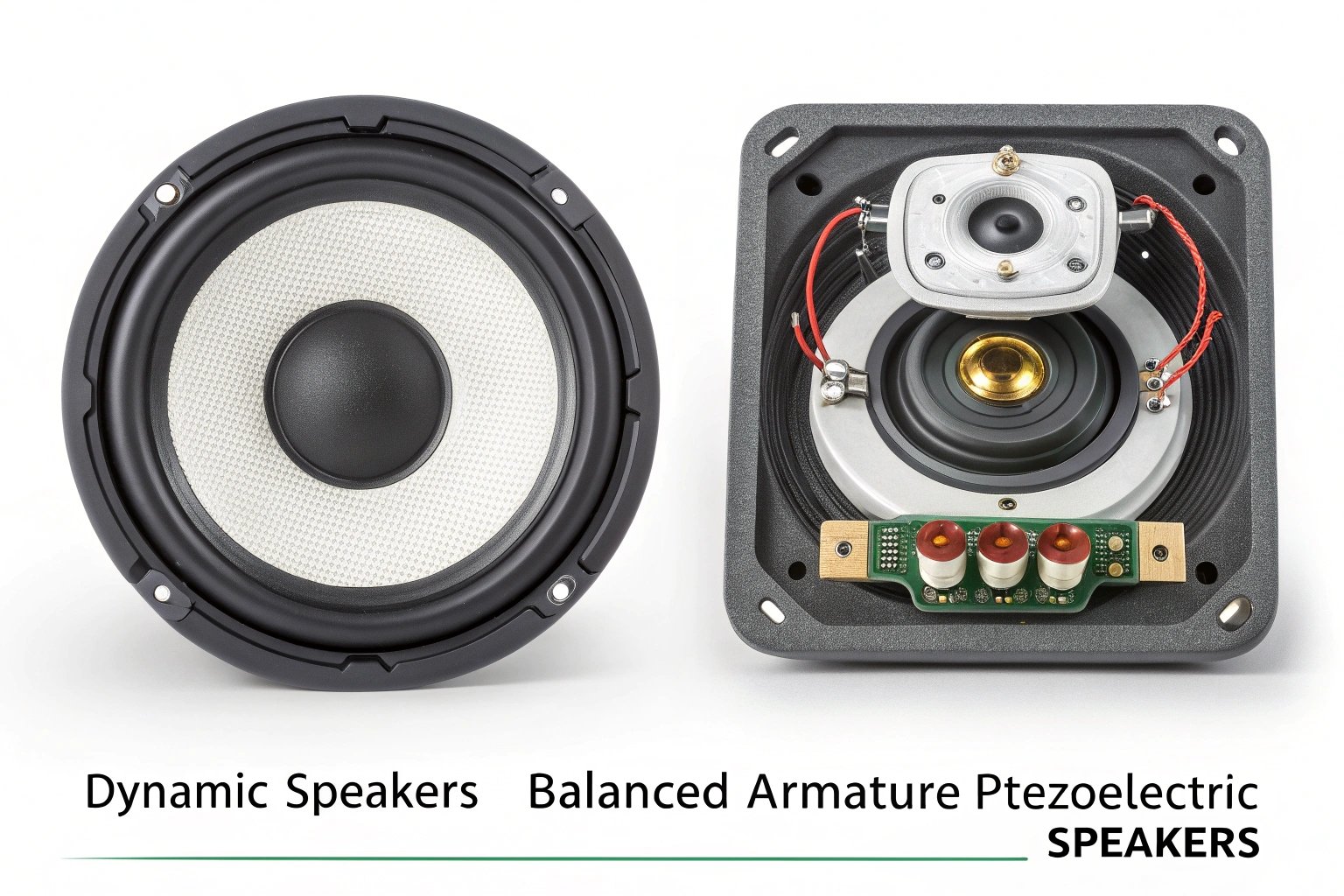When it comes to white noise machines, the speaker type used inside the device plays a crucial role in determining the overall sound quality. Many users may focus on sound variety or design, but the internal speaker design is what shapes how clear, consistent, and pleasant the output is. For manufacturers and buyers alike, understanding the differences between speaker types helps in selecting or producing a product that offers the most comfortable listening experience. So how do different speakers compare in white noise devices?

Why Does the Speaker Type Matter in a White Noise Machine?

The speaker is the component that turns the digital sound file or signal into audible sound. In white noise machines, a poor-quality speaker can lead to distortion, crackling, or an uneven frequency response. Since white noise often plays continuously for hours at low to medium volumes, the speaker must be durable, smooth-sounding, and free of harsh peaks.
Choosing the right speaker affects how relaxing or irritating the white noise will sound over long periods. A speaker that emphasizes certain frequencies too much might make the sound feel sharp or fatiguing. On the other hand, a flat, wide-response speaker will reproduce noise that feels natural and calming.
What Are the Common Speaker Types Used?
Most white noise machines use one of the following speaker types, each with its own characteristics:

- Mylar cone speaker: Lightweight, durable, and cost-effective. Often used in compact white noise devices. Known for high-frequency clarity but may lack bass depth.
- Paper cone speaker: Offers warm, natural tones and good frequency balance. Less resistant to moisture and aging but produces rich sound.
- Full-range dynamic speaker: Designed to reproduce a broad spectrum of frequencies from a single driver. Ideal for machines that offer complex ambient sound libraries.
- Piezoelectric speaker: Very thin and flat, often used in ultra-compact or wearable designs. Lower sound fidelity but highly energy efficient.
Each speaker type influences the sound experience differently. The choice depends on intended usage, price point, and acoustic goals.
How Do These Speaker Types Compare in Performance?
To compare speaker types objectively, it's helpful to look at how each performs in key areas relevant to white noise playback:
| Speaker Type | Sound Clarity | Bass Response | Durability | Size Efficiency |
|---|---|---|---|---|
| Mylar Cone | High | Low-Mid | High | Excellent |
| Paper Cone | Medium-High | Rich | Medium | Moderate |
| Full-Range Dynamic | Very High | Balanced | High | Good |
| Piezoelectric | Low | Very Low | Very High | Excellent |
Mylar speakers are common in budget and mid-range models due to their balance of cost and clarity. Full-range dynamic speakers are used in higher-end models where sound accuracy and tonal richness matter most. Paper cones deliver warmth and are often preferred in sleep-focused products. Piezoelectric units serve ultra-portable designs but sacrifice fidelity.
Which Speaker Type Is Best for Sleep Environments?

For sleep, the ideal speaker is one that produces a warm, even sound that doesn’t introduce sharp edges or tonal spikes. Both paper cone and full-range dynamic speakers are preferred for sleep machines, as they offer a soothing frequency range and more natural acoustics. They reproduce the ambient nature of rain, ocean, or brown noise in a way that feels immersive but never overwhelming.
Mylar speakers can still work well for basic white noise, especially in machines that emphasize pink or brown noise, which have lower frequency energy. However, the sound may lack fullness compared to other types.
Piezoelectric speakers are generally not recommended for sleep due to their harshness and limited frequency response, unless used in very quiet or specialized environments like hospital nurseries.
How Should You Choose Based on Application?
The best speaker type for a white noise device depends on its intended application:
- Travel or portable use: Choose devices with Mylar or Piezoelectric speakers for compact design and durability.
- Sleep therapy: Look for full-range or paper cone speakers to ensure a soothing, natural sound.
- Work or focus use: Mylar or full-range speakers perform well with sharp, clean sound for masking distractions.
- Infant sleep machines: Prioritize smooth low frequencies and no harsh edges—paper cone or soft-tuned full-range speakers are ideal.
Manufacturers should also consider the device’s housing and acoustic design, as speaker performance is affected by the enclosure’s shape, porting, and materials.
Conclusion: Does Speaker Type Really Make a Difference?
Yes, speaker type plays a central role in the overall user experience of a white noise device. From clarity and bass depth to the sound’s warmth and smoothness, the speaker determines how comfortable the audio will be during hours of use. Whether you're designing a product or buying one for personal use, understanding these differences helps ensure you get the right sound quality for your needs.
When chosen carefully and paired with a well-designed enclosure and sound profile, the right speaker transforms white noise from a simple hum into a truly calming and restorative tool.

